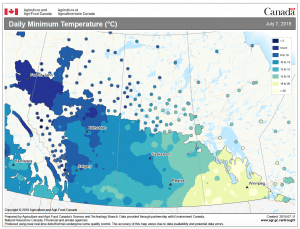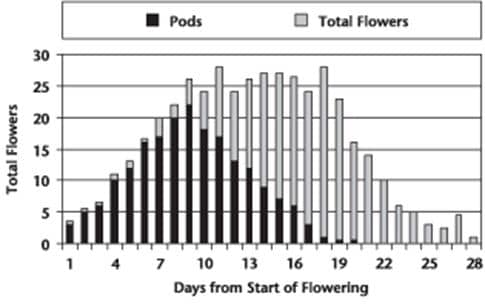
Click here for a PDF of the map.
*Thanks to AAFC’s Agroclimate Information Service for this custom map.
Even the lows have been very warm in some areas across the Prairies. The area of Western Manitoba where CCC agronomy specialist Justine Cornelsen lives had a low(!) of 24°C on July 7, the day represented in this map.
With hot days, a cool night can provide some relieve to heat-stressed canola plants. These warm nights can increase flower abortion. Add in dry conditions, and the effect will be even worse.
Heat blast that leads to flower and pod abortion will not necessarily lead to yield loss because canola has the capacity to produce a lot more flowers than necessary to meet its yield potential.

Canola plants that lose flowers can recover without a yield penalty — or not much of one — if conditions improve by early to mid-flower. The chart above shows that canola plants produce far more flowers than pods, providing a cushion to compensate for flower loss early. The plant can utilize the later flowers if needed. If not needed, these late flowers won’t likely amount to much.
But if temperatures stay hot all through flowering, yield loss could be high.
